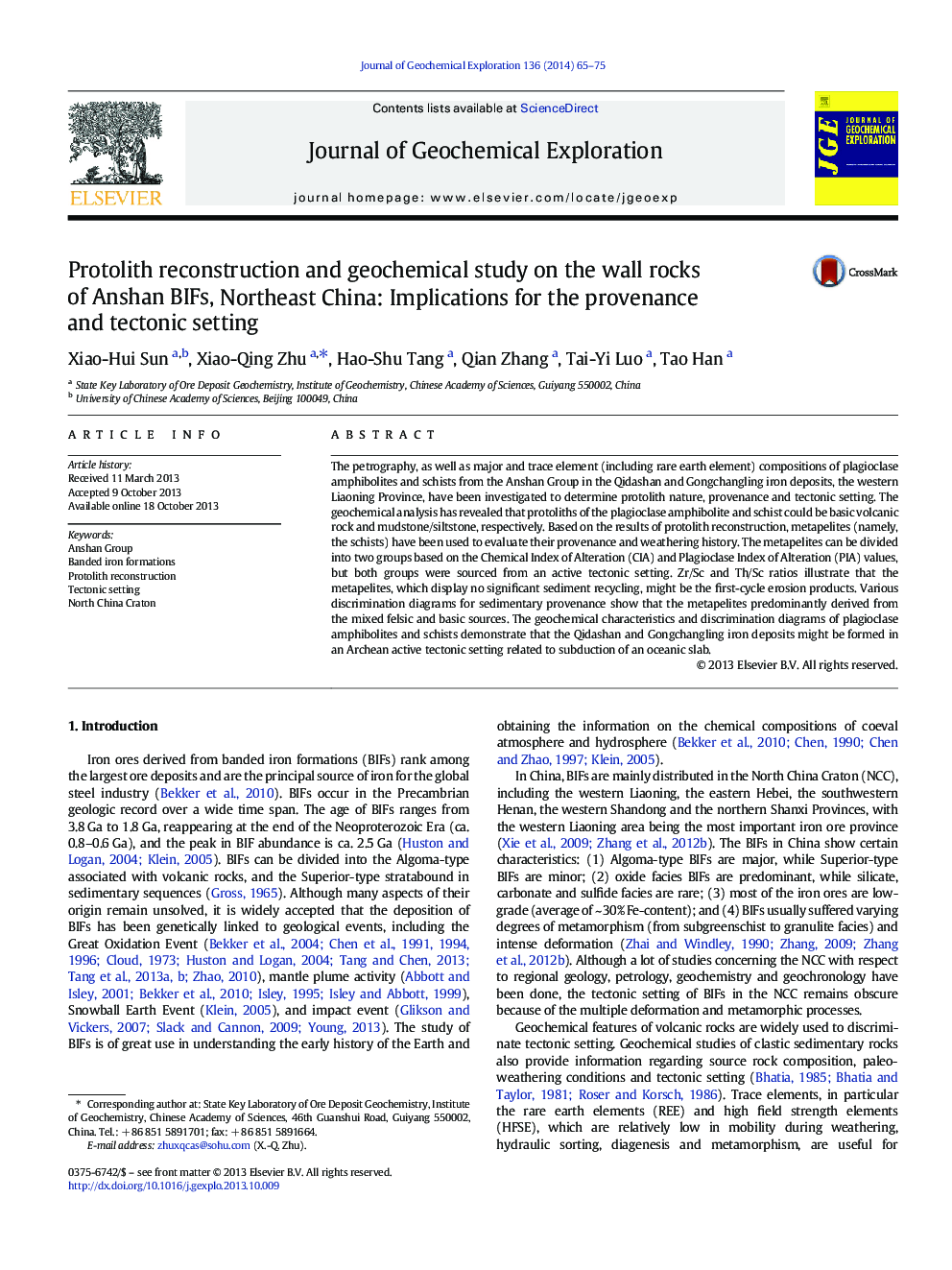| Article ID | Journal | Published Year | Pages | File Type |
|---|---|---|---|---|
| 4457502 | Journal of Geochemical Exploration | 2014 | 11 Pages |
•We identified the protoliths of plagioclase amphibolite and schist.•The source area and weathering degree of metapelites were discussed.•The Anshan BIFs were formed in an arc-related tectonic setting.
The petrography, as well as major and trace element (including rare earth element) compositions of plagioclase amphibolites and schists from the Anshan Group in the Qidashan and Gongchangling iron deposits, the western Liaoning Province, have been investigated to determine protolith nature, provenance and tectonic setting. The geochemical analysis has revealed that protoliths of the plagioclase amphibolite and schist could be basic volcanic rock and mudstone/siltstone, respectively. Based on the results of protolith reconstruction, metapelites (namely, the schists) have been used to evaluate their provenance and weathering history. The metapelites can be divided into two groups based on the Chemical Index of Alteration (CIA) and Plagioclase Index of Alteration (PIA) values, but both groups were sourced from an active tectonic setting. Zr/Sc and Th/Sc ratios illustrate that the metapelites, which display no significant sediment recycling, might be the first-cycle erosion products. Various discrimination diagrams for sedimentary provenance show that the metapelites predominantly derived from the mixed felsic and basic sources. The geochemical characteristics and discrimination diagrams of plagioclase amphibolites and schists demonstrate that the Qidashan and Gongchangling iron deposits might be formed in an Archean active tectonic setting related to subduction of an oceanic slab.
